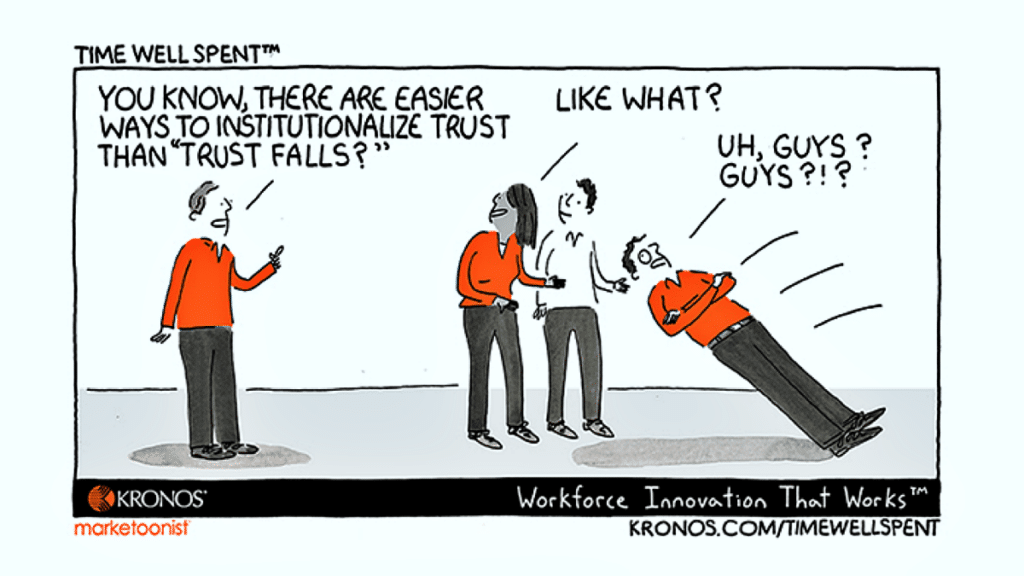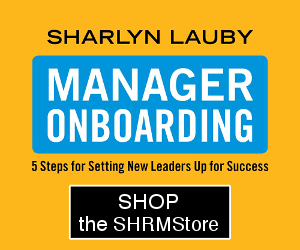(Editor’s Note: Today’s article is brought to you by our friends at Kronos, a leading provider of workforce management and human capital management cloud solutions. Want to create a more trusting work environment? Check out Kronos CEO Aron Ain’s book “Work Inspired: How to Build an Organization Where Everyone Loves to Work”. Enjoy the article!)

Ropes courses are outdoor team building activities where participants are exposed to physical activities as a way to problem-solve (How am I going to do this?), communicate (I need some help doing this!), and bond (Thank you for helping me do this.) Many years ago, going to a ropes teambuilding course was all the rage.
One of the most common activities in a ropes course was the trust fall. It was when a participant simply fell backward trusting that their colleagues would catch them. I couldn’t help but laugh when I saw this Time Well Spent from our friends at Kronos. It also reminded me that trust isn’t created with a single activity, building and maintaining trust is a process that happens over time.
Trust is tied to the organization’s brand. Whether it’s the consumer brand or the employment brand, trust is a part of the brand. People see the brand and say, “I can trust that brand.” Or “I want to trust that brand.” And they start to engage with it. Then people find out if what they initially saw is true (or not) and whether they will continue to engage with the organization.
Every day is about maintaining trust. I wonder what company cultures would be like if they viewed their goal as being simply to build and maintain trust. That doesn’t mean organizations can’t change things or that they will make everyone deliriously happy. It is possible to be disappointed or unhappy with something but trust the source. For example, when a new policy is implemented and while it might not benefit me, I understand that it will benefit most.
Losing trust doesn’t have to be the end. Sometimes trust is broken. It happens among individuals as well as with organizations. Both sides have a decision to make when trust evaporates – will we work to regain trust or not. In some cases, it might make sense to realize that the trusting relationship isn’t going to happen. But in many cases, trust can be repaired. It takes time, honest conversations, and a willingness to apologize and forgive.
In today’s business world, consumers are looking to spend their dollars with organizations they trust. Candidates are looking to work for organizations they trust. Employees want to work with managers they can trust. You get the point. Trust isn’t like a trust fall. It’s not a single activity. Rather it’s a process that takes time to build and even more time to maintain.







Tina Bull says
For all those who loved Lencioni’s book, The Five Dysfunctions of a Team, which began by talking about trust, I recommend the team assessment, The Five Behaviors of a Cohesive Team which is based on that work. A good facilitator of that program can really help a team make great strides in creating higher trust, in establishing rules of the game for engaging in productive conflict, and on holding each other accountable (thereby raising trust even more.)
Lovepreet D says
The branding is a critical way to attract, engage, and retain the people towards your organization. Branding is important because clients are savvy. Creating strong branding means initiating a healthy and positive bond between the organization and its employees, clients. The concept of organization brand talks about the idea you convey about the identity, unique features, and work culture of the organization to the potential employees, clients.